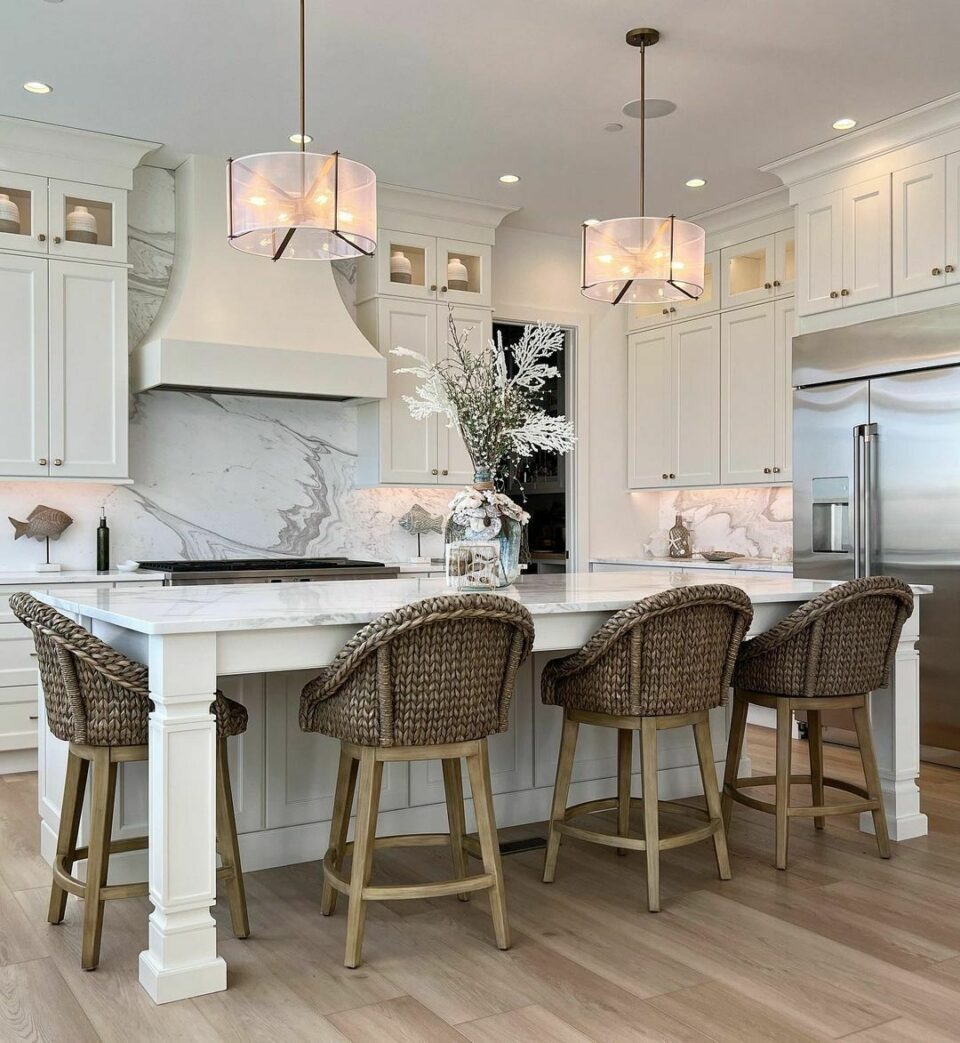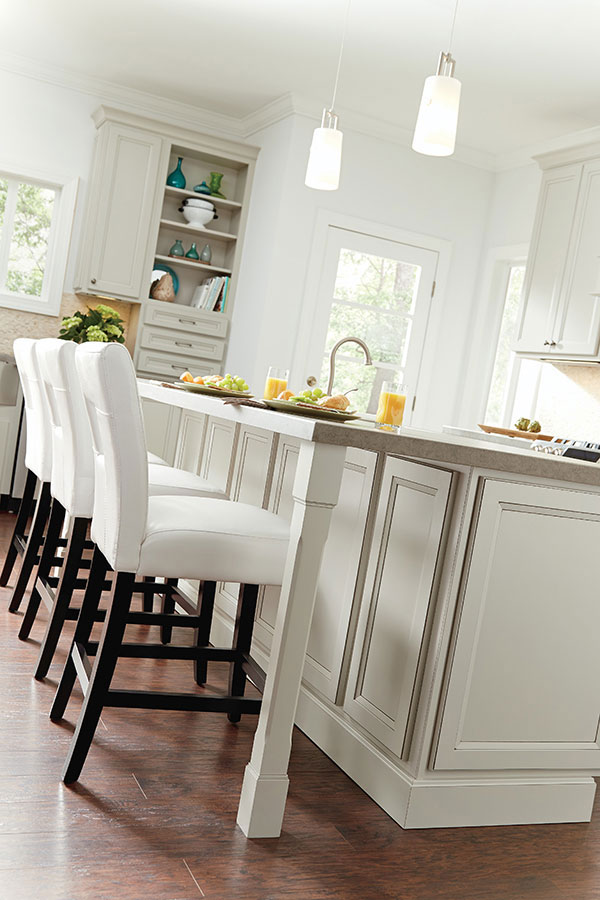Crucial Factors to Think About When Choosing Legs For Kitchen Area Island
Choosing the suitable legs for a kitchen area island includes a cautious evaluation of numerous aspects that can significantly affect both performance and aesthetic appeal. Among these, the selection of material plays a pivotal duty in guaranteeing longevity, while the layout should enhance the existing decor. Moreover, considerations such as elevation and weight support are necessary for security and comfort. As we discover these aspects, it ends up being clear that each choice can have far-reaching ramifications for the total kitchen experience. What subtleties should be considered in each of these groups to accomplish the optimal balance?
Product Options
When choosing legs for a kitchen island, understanding the various material options is crucial for accomplishing both visual allure and architectural integrity (Legs For Kitchen Island). The option of material substantially influences not only the toughness of the island but additionally its total layout and capability
Timber is a preferred option, offering warmth and adaptability. Solid hardwoods, such as oak or maple, provide stamina and can be discolored or repainted to match the kitchen style. Steel legs, often made from stainless steel or functioned iron, add a modern and commercial feel while ensuring durability and security. These materials are resistant to use and can support considerable weight, making them excellent for larger islands.
An additional option is engineered products, like MDF or plywood, which can be much more cost-effective while still offering a variety of surfaces. However, they might not provide the exact same degree of security as strong wood or steel. Last but not least, products such as acrylic or glass can develop a contemporary appearance, though they may require extra assistance to ensure stability.
Inevitably, the selection of material for cooking area island legs ought to align with the preferred functionality and the general style of the cooking area.
Design And Style

When considering style, the form and finish of the legs are important. Conical legs can give a feeling of agility and elegance, while thicker, more robust legs can share stamina and security. In addition, the coating-- be it repainted, stained, or all-natural-- need to complement the cabinetry and counter top products to create a unified appearance.
Additionally, the design of the legs can likewise reflect personal preference. Custom or ornamental legs, such as those including complex carvings or one-of-a-kind geometric shapes, can work as centerpieces, adding character and character to the kitchen. Eventually, the appropriate choice will certainly not just enhance performance yet additionally boost the visual appeal, making the kitchen island a standout feature of the home.
Height Considerations
Picking the proper height for kitchen area island legs is vital, as it directly affects both capability and comfort. The standard elevation for a cooking area island generally varies from 36 to 42 inches, aligning with common counter top elevations. A 36-inch height is optimal for cooking and cooking, permitting for comfy use cooking area appliances and tools. On the other hand, an elevation of 42 inches is usually favored for islands meant for bar seats, accommodating taller stools and offering a laid-back dining experience.

It is also important to represent users' elevations and preferences. Personalizing the elevation can guarantee a comfy experience for all relative, making the kitchen island a much more useful and enjoyable room.
Weight Assistance
Ensuring adequate weight assistance for kitchen area island legs is important for both safety and security and functionality. The cooking area island often offers numerous purposes, including food preparation, eating, and added storage space, demanding a robust assistance structure. When picking legs, it is essential to think about the general weight ability needed based on the find this island's meant use and the products that will be positioned on it.
The option of material for the legs plays a considerable role in their weight-bearing abilities. Solid wood, steel, and durable compounds usually offer superior strength compared to lighter products. Additionally, the layout of the legs-- whether they are right, tapered, or have a pedestal kind-- can influence their capability to disperse weight efficiently throughout the framework.
Moreover, the leg placement must be purposefully prepared to boost stability. Legs positioned at the corners or with a wider base can much better support heavier tons. Always get in touch with the maker's specifications pertaining to lots limitations to guarantee that the legs can maintain the designated weight without jeopardizing safety and security. In recap, choosing kitchen area island legs with adequate weight support is necessary for producing a useful and safe culinary room.
Setup and Upkeep
Appropriate installation and maintenance of kitchen island legs are vital for making sure longevity and stability. To start, it is vital to comply with the producer's standards during installment. This usually entails safeguarding the legs to the island base using proper fasteners, guaranteeing that the legs are degree and aligned. Utilizing a level tool can aid prevent tottering and enhance the overall visual appeal of the kitchen island.
When mounted, regular maintenance is required to maintain the integrity and appearance of the legs - Legs For Kitchen Island. For wood legs, periodic cleansing with a damp towel and application of appropriate wood gloss can protect against wetness damage and keep their coating. Steel legs may need a gentle cleansing service to eliminate grease and crud, complied with by a completely dry towel to avoid corrosion development
In addition, inspect the legs consistently for signs of wear or damage, such as fractures or loose joints. Tightening screws or screws as required can also extend the lifespan of the legs. By adhering to these setup and maintenance techniques, home owners can make sure that their cooking area island continues to be sturdy and aesthetically appealing for several years to come.
Verdict

Aesthetic coherence is vital in selecting the style and style of legs for a cooking area island, as these aspects substantially influence the total ambiance of the space. Conical legs can offer a sense of lightness and elegance, while thicker, a lot more durable legs can communicate stamina and stability.Selecting the suitable elevation for kitchen area island legs is vital, as it straight impacts both functionality and convenience. In recap, picking kitchen island legs with ample weight assistance is essential for creating a functional and safe cooking space.
In final thought, picking legs for a my link kitchen island requires mindful factor to consider of various aspects, consisting of product options, design, elevation, weight assistance, and installment.